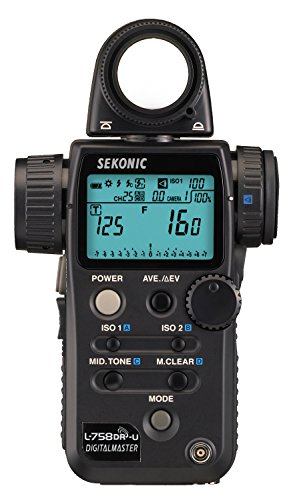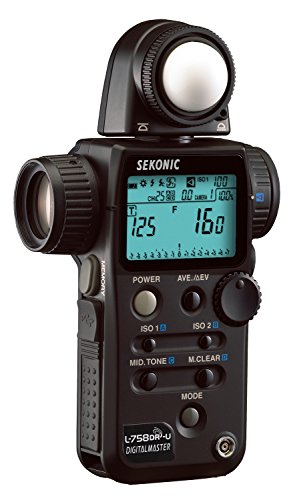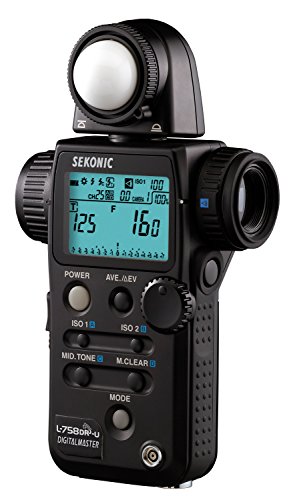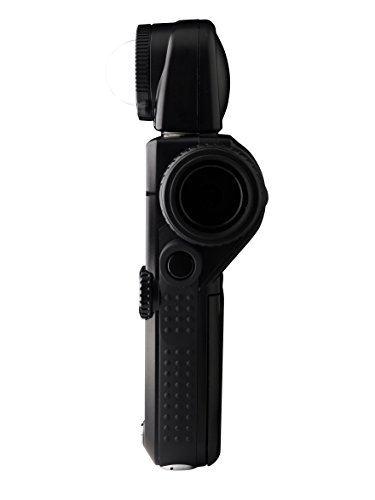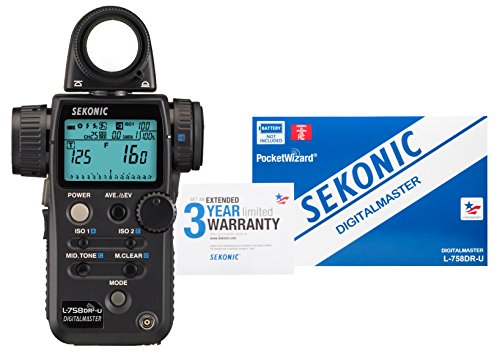Description
- Exposures accurate down to a tenth-of-a-stop in full-stop mode for both ambient and electronic flash light readings with a repeat accuracy of +/- 0.1 EV. Meter can also display shutter-speeds and apertures in half or third-stop increments to mirror the exposure settings on your camera. Flash exposures can be recorded cumulatively or non-cumulatively.
- Built-in 1-degree spot meter features an adjustable diopter (-2.5 to 1.0d), and is threaded for 30.5mm filters and/or lens hood (a tethered lens cap is included). Large red LED characters display exposure data within the viewfinder allowing for real-time exposure referencing while maintaining continuous eye contact with your subject.
- The L-758DR's incident swivels 270-degrees allowing you to 'walk the set' while maintaining constant visual contact with the meter's LCD display. Flash exposures can be taken with or without a tethered PC cord.
- Mid-tone button allows you to shift the highlights or shadows to within the dynamic range of the profiled exposure reading. Warning flashes for out of range readings.
- For mixed lighting scenarios, the Sekonic L-758DR DigitalMaster displays the combined exposure values of both flash and ambient light sources, including the percentage of flash in total exposure in 10-percent increments.
"What moves the L-758DR-U DigitalMaster to the head of the class is that it's the only meter which can be calibrated to read light the way your particular camera system reads light. Every camera system is unique. Optical, mechanical and imaging components all act on each other to produce slight differences in exposure and the dynamic range of the camera system. Sekonic helps you discover the differences in your camera system and use this information to control light, make better exposures and take better pictures than ever before. By running an easy calibration test using Sekonic's L-758DR, one of Sekonic's Exposure Profile Targets (purchased separately) and the included Data Transfer Software (Mac & Windows), you can accurately profile the characteristics of your camera's imaging system to determine its true native ISO, dynamic range and clipping points. After processing the test data and determining exposure parameters, the resulting data is uploaded from your computer via the included USB cable to the meter, where it is stored as camera profiles. Profiling data from up to three cameras can be stored in your meter for instant recall. "
